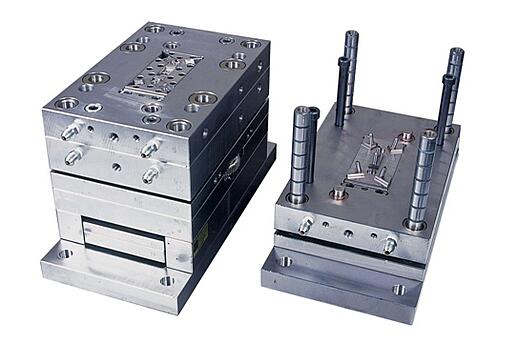Production of retail display stands almost always requires “tooling”. Sometimes customers will be hit with “mold” charges or “tooling” charges without really understanding what they are. I’ve heard a lot of customers say they don’t want to be charged for tooling. While they might not know what is involved in tooling, they do know they don’t want to pay for it. In today’s blog, we’ll unpack the mystery surrounding tooling and provide a basic overview of the nature of tooling and why it is necessary in the production of high quality retail display stands.
Tooling is a broad term that includes any type of mould, jig or other type of device that is created to make the manufacturing process easier, more precise and more consistent. Tooling is never free. It is an essential component of manufacturing costs and generally well worth the investment. If a POP display provider tells you they are not charging for tooling, what they mean is that they are not breaking out the cost of tooling but rather amortizing the tooling costs into the per unit cost.
There are many types of tooling. Let’s look at just a few examples. The first example is tooling that is required to silk screen graphics onto a retail display stand. Silk screening requires the creation of film positives which are created by taking vectored art work and turning it all black. The black art work is “burned” onto clear film similar to an overhead transparency. If the art work is more than one color, film positives need to be created for each color. The film positives are used to create the screen which is placed in an aluminum frame as seen in the picture below. The ink passes through the stencil on the screen to create the graphics on the display surface. In general, it is relatively cost effective to make a screen provided the quantity of displays is reasonable.
A second type of tooling is a metal jig used to make wire components like wire shelves or a wire grid. This type of tooling is usually made out of sheet metal which is welded together into a frame. The sheet metal frame has a series of grooves in which the cut wire is placed so it can be easily welded in precisely the right place. These wire jigs are fairly routine to make and not that expensive, but they are essential to create consistency in the manufacturing process. Most prototypes involving wire fixtures are handmade without the benefit of tooling so in most cases the quality of the display increases as a result of using tooling.
The last type of tooling we’ll discuss today is the tooling used in the plastic injection molding process. This type of tooling tends to be the most expensive and is therefore frequently broken out as a line item instead of being amortized into the unit cost. Injection molded tooling is generally created out of blocks of steel and is made by carving out cavities which are made in the shape of the item being produced. During the injection molding process the plastic resin material is deposited into the cavities to create the item. Injection molds can be single or multi-cavity. The larger the mold and the more materials used, the more expensive the tooling. These hunks of steel are heavy and difficult to move around. Injection molding tooling is often good for a certain number of production units before needing to be refurbished so it is a good idea to ask your display provider how long the mold will last before you fork over the tooling fee.
While there are many other types of tooling used in the manufacturing process such as tooling for vacuum forming, bending metal tubing, and punching sheet metal, the types we covered in this discussion will give you a good idea of what tooling is and why it is important in the production process.
Jim Hollen is the owner and President of RICH LTD. (www.richltd.com), a 35+ year-old California-based point-of-purchase display, retail store fixture, and merchandising solutions firm which has been named among the Top 50 U.S. POP display companies for 9 consecutive years. A former management consultant with McKinsey & Co. and graduate of Stanford Business School, Jim Hollen has served more than 3000 brands and retailers over more than 20 years and has authored nearly 500 blogs and e-Books on a wide range of topics related to POP displays, store fixtures, and retail merchandising.
Jim has been to China more than 50 times and has worked directly with more than 30 factories in Asia across a broad range of material categories, including metal, wood, acrylic, injection molded and vacuum formed plastic, corrugated, glass, LED lighting, digital media player, and more. Jim Hollen also oversees RICH LTD.’s domestic manufacturing operation and has experience manufacturing, sourcing, and importing from numerous Asian countries as well as Vietnam and Mexico.
His experience working with brands and retailers spans more than 25 industries such as food and beverage, apparel, consumer electronics, cosmetics/beauty, sporting goods, automotive, pet, gifts and souvenirs, toys, wine and spirits, home improvement, jewelry, eyewear, footwear, consumer products, mass market retail, specialty retail, convenience stores, and numerous other product/retailer categories.



